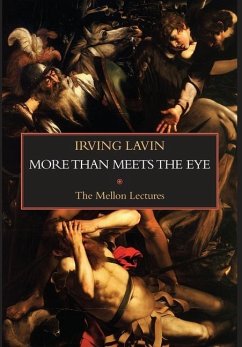In 2004, Irving Lavin gave the six lectures that make up this book. They were delivered at the National Gallery of Art in Washington, DC, as part of the Andrew W. Mellon Lectures in the Fine Arts, an annual series established in 1949, as Mellon himself said, "to bring to the people of the United States the results of the best contemporary thought and scholarship." Lavin's lectures as delivered, however, were only the first step in expressing his results. He continued to develop the texts over the next decade and a half. "More than Meets the Eye" is a simple phrase hiding an unexpected wealth of meaning. English literature, ranging from Milton to Galsworthy, provides parallels to the modern turn of phrase. It became a popular piece of jargon in the development of American advertising, and by the 1930s it headed illustrated ads that flooded the market with pictures meant to show the qualities of the merchandise consumers were being encouraged to buy. It even had its antithesis: "What you see is what you get," with an acronym "wysiwyg," still in use at the beginning of the twenty-first century, mainly to describe the page-like interface - hiding a myriad of computer technology - of Macintosh and other computer systems. This book's subtitle, "Irony, Paradox, and Metaphor in the History of Art," contains terms associated with rhetoric, oratory, and literature. Such terms ready the reader to meet ideas that lie beyond, under, over, and around the works to be considered. Lavin thus uncovers - within the artist's intellectual and emotional tool box - meanings not usually associated with static and stable visual images, namely "figures of speech" set forth in visual form. The aim of this book is to unveil this inner life, the mysterious "more" offered by the visual artist, the very "results" Mr. Mellon requested. Marilyn Aronberg Lavin has now assembled, edited, and updated these lectures, their notes and bibliography to present a comprehensive collection of richly illustrated essays. This follows upon her previous edition of Irving Lavin's Slade Lectures at Oxford, published by Italica Press in 2020 as The Art of Commemoration in the Renaissance. 352 pages, preface, notes, bibliography, index. 302 black-and-white and color figures.



![An Account of the Lives and Works of the Most Eminent Spanish Painters, Sculptors and Architects, Tr. [By U. Price] From the Musæum Pictorium An Account of the Lives and Works of the Most Eminent Spanish Painters, Sculptors and Architects, Tr. [By U. Price] From the Musæum Pictorium](https://bilder.buecher.de/produkte/68/68585/68585631m.jpg)




